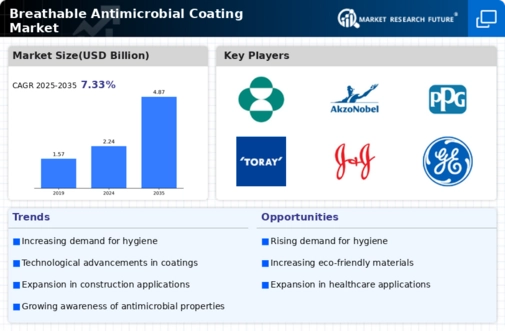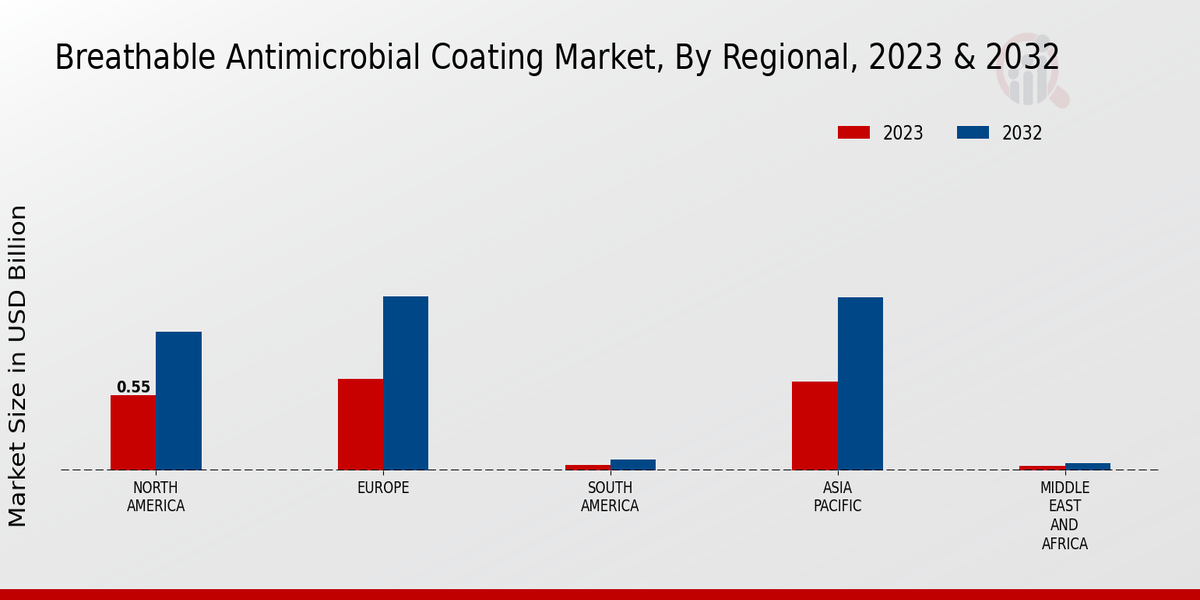Diverse Application Areas
The versatility of breathable antimicrobial coatings across various industries is a key driver of the Global Breathable Antimicrobial Coating Market Industry. These coatings find applications in textiles, healthcare, automotive, and construction, among others. For instance, in the textile industry, antimicrobial coatings are used in clothing and upholstery to prevent odor and degradation. In healthcare, they are applied to surfaces and medical devices to minimize infection risks. This broad applicability not only enhances market penetration but also encourages innovation in product development, thereby fostering sustained growth in the industry.
Growing Demand for Hygiene Solutions
The increasing global awareness regarding hygiene and cleanliness is driving the Global Breathable Antimicrobial Coating Market Industry. As consumers become more conscious of the need for antimicrobial protection in various applications, including textiles, healthcare, and construction, the demand for breathable coatings is expected to rise. This trend is particularly evident in urban areas where population density exacerbates hygiene concerns. The market is projected to reach 2.24 USD Billion in 2024, reflecting a robust growth trajectory as industries adopt these coatings to enhance product safety and longevity.
Rising Health Awareness Post-Pandemic
The heightened focus on health and wellness is propelling the Global Breathable Antimicrobial Coating Market Industry. As individuals and organizations prioritize health safety, the demand for products that offer antimicrobial protection has surged. This trend is particularly pronounced in sectors such as healthcare, where the need for sterile environments is critical. Moreover, the construction industry is increasingly incorporating antimicrobial coatings in building materials to ensure safer living and working spaces. This shift is expected to contribute to the market's growth, with projections indicating a potential market size of 4.87 USD Billion by 2035.
Regulatory Support for Antimicrobial Products
Government regulations promoting the use of antimicrobial products are bolstering the Global Breathable Antimicrobial Coating Market Industry. Many countries are implementing stringent hygiene standards across various sectors, including healthcare, food processing, and consumer goods. These regulations often encourage manufacturers to adopt antimicrobial coatings to comply with safety requirements. For example, the European Union has established guidelines that necessitate the use of antimicrobial treatments in specific applications. This regulatory landscape is likely to enhance market growth as companies seek to align their products with these standards, thereby increasing the adoption of breathable antimicrobial coatings.
Technological Advancements in Coating Technologies
Innovations in coating technologies are significantly influencing the Global Breathable Antimicrobial Coating Market Industry. Advances in material science have led to the development of more effective and durable antimicrobial coatings that maintain breathability while providing superior protection. For instance, the integration of nanotechnology in coatings enhances their efficacy against a broader spectrum of pathogens. This technological evolution not only improves product performance but also expands application areas, thereby driving market growth. As a result, the industry is expected to witness a compound annual growth rate (CAGR) of 7.32% from 2025 to 2035.





















Leave a Comment